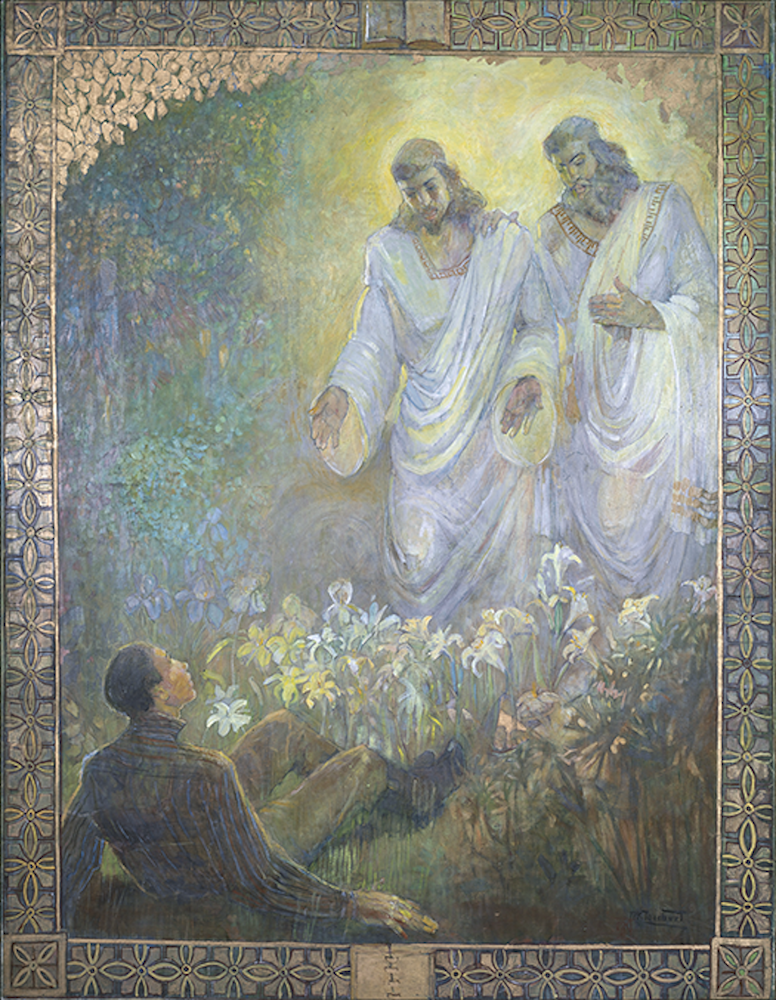LIGHT & COLOR IN ART
Let’s explore works of art through the lens of color and light!
Crossing the Divide

Find any artwork in the exhibition Crossing the Divide that makes use of the colors blue, gold, and white. Discuss their individual and collective effect. To learn more about these unique colors, watch the BBC documentary, The History of Art in Three Colours (2012).
In the same exhibition, find the small digital work of art by Jenny Holzer, titled Purple Truisms Survival (2006). Read several phrases on the screen. Then select one of Holzer’s “truisms” and discuss it with a friend. Do you agree or disagree with the statement?
The Difficult Part

Next, go to The Difficult Part: Brian Kershisnik and locate the painting Après la Guerre (2022), pictured above. What might be going on here? Notice how the light changes from the top of the painting towards the sunlight. Do you think the sun is rising or setting? How would either scenario impact the mood or meaning of the subject?
Looking around this gallery, find a painting that uses a lot of bright white. How familiar are you with the science behind white as a color? Does it even qualify as a color? Google, if you must.
KÉYAH

Go to the exhibition titled Kéyah: Our Home, by Eugene Tapahe on the lower level and watch the short video to learn about this artwork by a Native American artist. Then, wander the gallery, paying special attention to the dimly lit space and brightly lit works of art. How does this visual contrast affect your experience?
FROM THE VAULT

Stay on the lower level and go to the exhibition From the Vault. Find Minerva Teichert’s painting The First Vision (1934). Joseph Smith recounted: “I saw a pillar of light…above the brightness of the sun” (Joseph Smith - History 1:16). Discuss how the painter approached the challenge of depicting such a celestial description of light, using colored paint.
Depending on the type of light an artist is trying to portray (natural, sacred, symbolic…), they will use various combinations of color. Look for other examples of painted light in this exhibition. Which one of these is your favorite, and why?
Plexus no. 29

Head back upstairs and explore Gabriel Dawe's rainbow-like fiber art installation, Plexus No. 29 (2014), located in the main atrium of the MOA. Walk around and notice how the artwork constantly changes with every new perspective (don’t forget the balcony). Take and share a photo of your favorite view!


